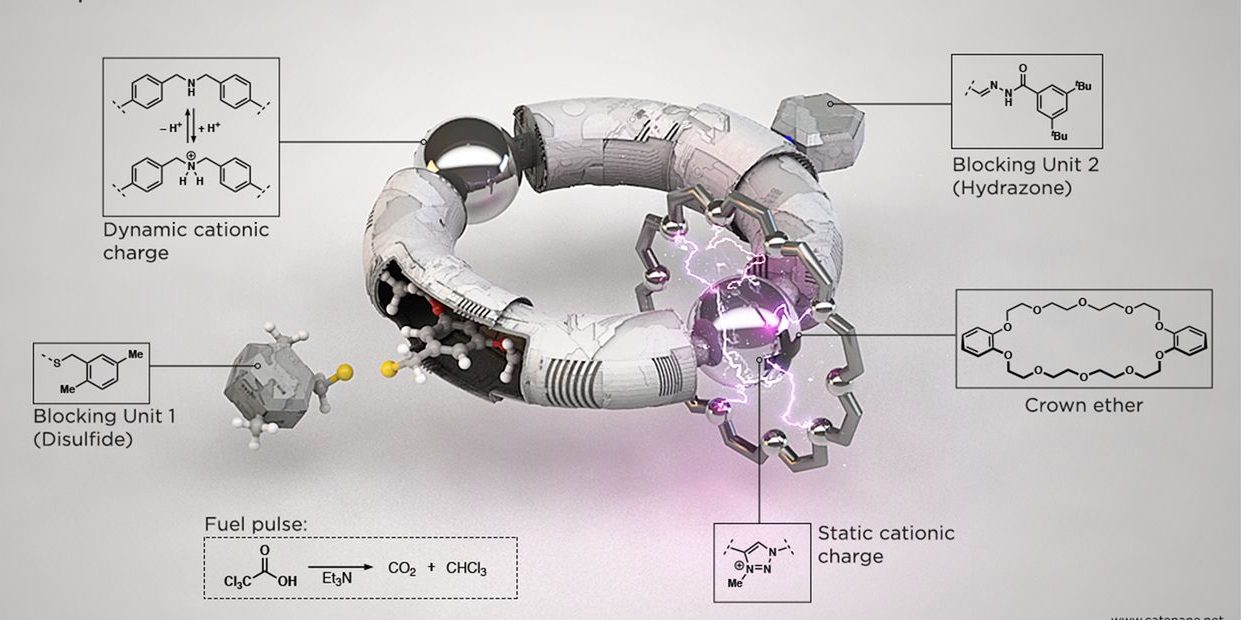What’s the best way to build a molecular machine?
Some of the smallest, most useful machines known to science are the biological molecules that keep living things living. The protein myosin drives the contraction and relaxation of muscle. Kinesin drags cellular cargo around the cell. Motor enzymes unwind, rewind, and maintain DNA, and bacteria use a molecular motor to rotate their whip-like flagella up to 100,000 times per minute, propelling them forward. These machines turn chemical energy into motion. They’re very efficient at their jobs.
Now researchers are building synthetic cousins of these molecular machines, taking inspiration not only from their design but also their function. “Nature has worked with over 3 billion years of evolution to use them for every conceivable thing,” says chemist David Leigh at the University of Manchester in the United Kingdom, who has developed a variety of nanoscale machines. “So perhaps nature should tell us how and why to use them.”
Read more at PNAS, here.
Image: David Leigh
